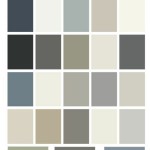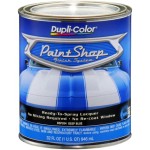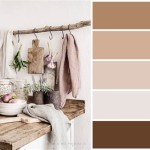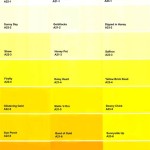What Color Should You Paint the Inside of a Garage Door?
The selection of an appropriate paint color for the interior surface of a garage door is a decision that balances aesthetic considerations with practical implications for light reflection, temperature regulation, and overall garage environment. While often relegated to an afterthought in home improvement projects, the color of the garage door interior significantly impacts the functionality and visual appeal of the space. Factors such as the existing garage décor, the intended use of the garage, and the material of the garage door itself should all be carefully considered when making this choice.
The interior of a garage door, unlike its exterior counterpart, is shielded from the elements, providing a greater degree of flexibility in color selection. Nonetheless, the selected color should contribute to a cohesive and functional space. It is essential to examine the benefits and drawbacks of different color families, considering how they interact with the garage's lighting conditions and contribute to the overall ambiance. Proper planning and color selection will ensure a garage door interior that is both visually pleasing and functionally advantageous.
Light Reflectivity and Brightness
One of the primary considerations when selecting a paint color for the interior of a garage door is the level of light reflectivity. Lighter colors, such as white, off-white, and light gray, possess a higher light reflectance value (LRV) than darker colors. A higher LRV indicates that the color will reflect more light back into the space, effectively increasing the overall brightness. This is particularly beneficial in garages that lack natural light sources or rely heavily on artificial illumination. A brighter garage is generally perceived as more spacious and inviting, facilitating tasks that require good visibility, such as repairs, storage organization, and parking.
White, as the purest form of light reflection, is frequently chosen for garage door interiors due to its ability to maximize brightness. Off-white variations, such as cream or ivory, can provide a slightly warmer tone while still maintaining a high level of light reflection. Light gray offers a more modern and subtle aesthetic while still delivering a significant boost to the garage's overall illumination. The selection of a light color can reduce the need for additional lighting fixtures, potentially lowering energy consumption and costs.
Conversely, darker colors absorb light rather than reflect it, resulting in a dimmer environment. While dark colors may be preferred for aesthetic reasons in certain situations, it is important to carefully consider the impact on the overall brightness of the garage. If a darker color is chosen, supplemental lighting may be necessary to compensate for the reduced light reflectivity. This could include the installation of additional overhead lights, task lighting, or strategically placed lamps. The impact of darker colors is amplified in smaller garages or those with limited natural light access. Thus, careful assessment of the garage's existing lighting conditions is crucial before opting for a darker color palette.
Matching or Complementing Existing Décor
The interior color of the garage door should ideally complement or coordinate with the existing décor within the garage. This encompasses the color of the walls, flooring, storage cabinets, and any other prominent features within the space. A cohesive color scheme creates a unified and visually appealing environment, contributing to a more organized and aesthetically pleasing garage.
If the garage walls are painted in a neutral color, such as white, gray, or beige, the garage door interior can be painted in a similar shade to maintain a seamless and uniform appearance. Alternatively, the garage door can be painted in a contrasting color to create visual interest and add a pop of color to the space. If a contrasting color is selected, it’s important to select a hue that complements the existing colors in the garage to avoid a jarring or disjointed effect. For example, if the walls are painted in a cool gray, the garage door could be painted in a slightly warmer shade of gray or a complementary color like light blue or green.
For garages with more intricate décor schemes, such as those used as workshops or hobby spaces, the garage door color should be chosen to blend in or enhance the existing design elements. Consider the colors of any woodworking benches, storage solutions, or display areas. If these elements are already colorful, a neutral garage door color may be the best choice to avoid overwhelming the space. However, if the existing décor is primarily neutral, the garage door can be used as an opportunity to introduce a splash of color and personality into the garage. Color swatches and visualization tools can assist in creating a unified aesthetic.
Impact on Temperature and Energy Efficiency
While the primary function of paint is typically aesthetic, its color can also subtly influence the temperature within a garage. Darker colors absorb more solar radiation than lighter colors, potentially leading to an increase in temperature within the garage, especially in warmer climates. Conversely, lighter colors reflect more sunlight, helping to keep the garage cooler. While the impact of paint color on temperature may not be as significant as insulation or ventilation, it can still contribute to the overall thermal comfort of the garage.
In regions with hot summers, painting the interior of the garage door in a lighter color can help to minimize the heat absorbed by the door, thereby reducing the overall temperature within the garage. This can be particularly beneficial for garages that are not air-conditioned or have limited ventilation. A cooler garage is more comfortable for working or storing temperature-sensitive items. Reduced heat buildup can also contribute to lower energy costs if the garage is connected to the rest of the house.
In colder climates, the impact of paint color on temperature is less pronounced, but darker colors can still absorb some solar radiation and help to slightly warm the garage. However, the difference is often minimal and unlikely to significantly impact the overall heating costs. The insulation of the garage door and the garage's insulation are more impactful on temperature regulation. In these climates, the choice of paint color can be based more on aesthetic preferences and light reflectivity rather than concerns about temperature control. The effect of paint color on temperature is often minimal compared to other factors. The effectiveness of insulation and ventilation should be prioritized before focusing on the color of the paint.
Beyond the general color family, consideration should be given to the specific type of paint used. Acrylic latex paints are commonly chosen for garage doors due to their durability, water resistance, and ease of application. Look for paints that are specifically formulated for exterior or interior/exterior use to ensure that they can withstand the rigors of a garage environment. Ensure that the paint selected is compatible with the garage door's material, be it steel, wood, or aluminum. This consideration ensures proper adhesion and longevity of the paint job.
Ultimately, the selection of the most appropriate paint color for the interior of a garage door is a multifaceted decision that involves careful consideration of factors such as light reflectivity, aesthetic preferences, and potential impact on temperature. By evaluating these elements, homeowners can create a garage space that is both visually appealing and functionally optimized. The choice extends beyond mere aesthetics, influencing the garage's functionality for years to come. This decision should be carefully deliberated.

5 Simple Guidelines For Choosing Garage Paint Colors

Choosing Interior Garage Paint Colors Wow 1 Day Painting

Choosing Interior Garage Paint Colors Wow 1 Day Painting

Choosing Interior Garage Paint Colors Wow 1 Day Painting

Garage Paint Ideas Colors For The Floor Door Walls

5 Simple Guidelines For Choosing Garage Paint Colors

Painting Our Garage Doors Urbane Broe Young House Love

5 Simple Guidelines For Choosing Garage Paint Colors

Garage Paint Ideas Colors For The Floor Door Walls

The Best Garage Wall Paint Color Ideas Angela Marie Made
Related Posts








